Abbreviation Hor Declination −60 Bayer/Flamsteed designation 10 | Genitive Horologii Right ascension 3 Main stars 6 Stars with planets 3 | |
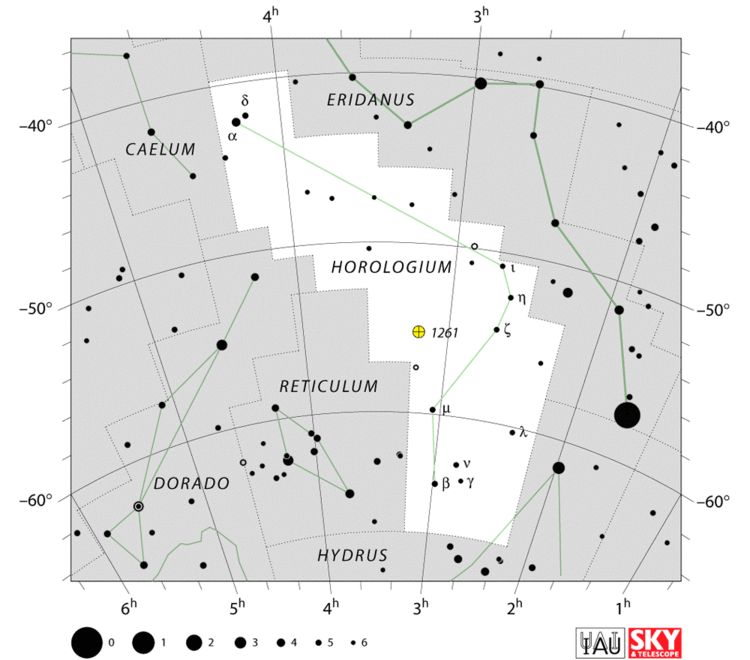 | ||
Pronunciation /ˌhɒrəˈloʊdʒiəm, -ˈlɒ-/,genitive /ˌhɒrəˈloʊdʒiˌaɪ, -ˈlɒ-/ Similar | ||
Horologium is a faint constellation in the southern sky. It was devised by French astronomer Nicolas Louis de Lacaille in 1752, and it remains one of the 88 modern constellations. The constellation's brightest star is Alpha Horologii, an orange giant. R Horologii is a red giant Mira variable with one of the widest ranges in brightness known. Three star systems have exoplanets, while Nu Horologii has a debris disk.
Contents
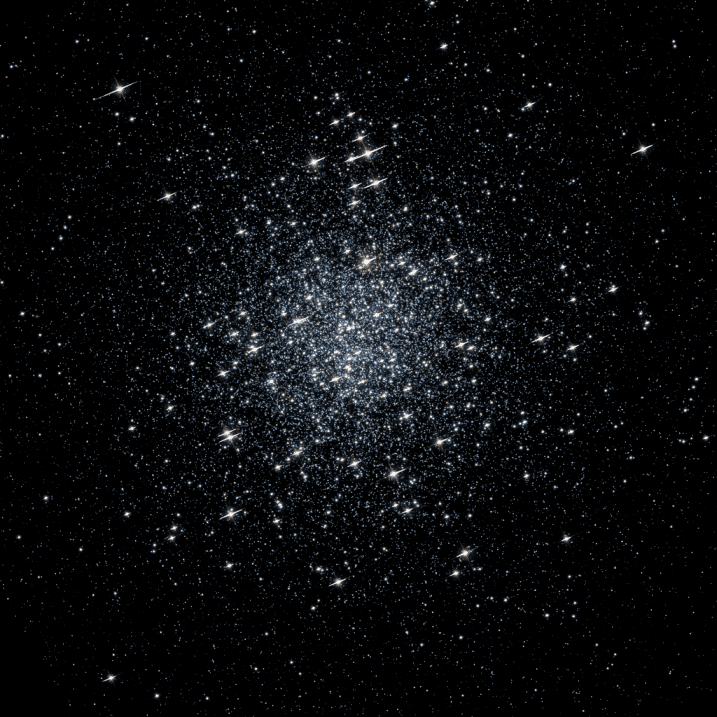
History
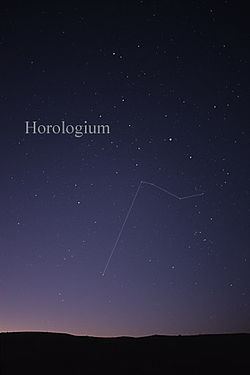
The French astronomer Nicolas Louis de Lacaille first described the constellation in French as l'Horloge à pendule & à secondes (clock with pendulum and seconds hand) in 1752, after he had observed and catalogued almost 10,000 southern stars during a two-year stay at the Cape of Good Hope. He devised fourteen new constellations in uncharted regions of the Southern Celestial Hemisphere not visible from Europe. All but one honoured instruments that symbolised the Age of Enlightenment. Lacaille Latinised the name to Horologium on his 1763 chart.
Characteristics
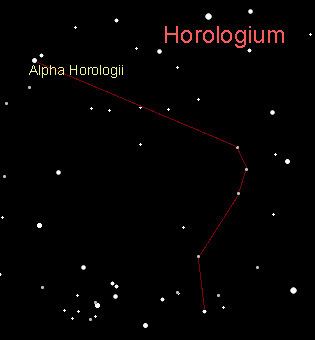
Covering a total of 248.9 square degrees or 0.603% of the sky, Horologium ranks 58th in area out of the 88 modern constellations. Its position in the Southern Celestial Hemisphere means that the whole constellation is visible to observers south of 23°N. Horologium is bordered by five different constellations: Eridanus (the Po River), Caelum (the chisel), Reticulum (the reticle), Dorado (the dolphinfish/swordfish), and Hydrus (the male water snake). The three-letter abbreviation for the constellation, as adopted by the International Astronomical Union in 1922, is 'Hor'. The official constellation boundaries are defined by a twenty-two sided polygon (illustrated in infobox). In the equatorial coordinate system, the right ascension coordinates of these borders lie between 02h 12.5m and 04h 20.2m, while the declination coordinates are between −39.63° and −67.04°.
Stars
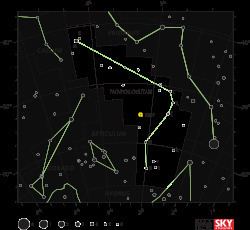
Horologium has only one star brighter than apparent magnitude 4, and 41 stars brighter than or equal to magnitude 6.5. Lacaille charted and designated 11 stars with the Bayer designations Alpha through to Lambda Horologii in 1756. Baily removed the designations of Epsilon and Theta Horologii as he held they were too faint to warrant naming. He was unable to find a star that corresponded to the coordinates Lacaille's Beta Horologii. Determining that the coordinates were wrong, he assigned the designation to another star. Kappa Horologii, too, was unable to be verified, yet was most likely the star HD 18292. Gould assigned designations to what became Mu and Nu Horologii as he felt they were bright enough to warrant them.

Alpha Horologii, the brightest, is an orange giant of magnitude 3.9, located 115.0 ± 0.5 light-years distant from Earth. Bode depicted it as the clock's pendulum, while Lacaille made it one of the weights. Beta Horologii is a white giant of magnitude 5.0, 314 light-years from Earth.
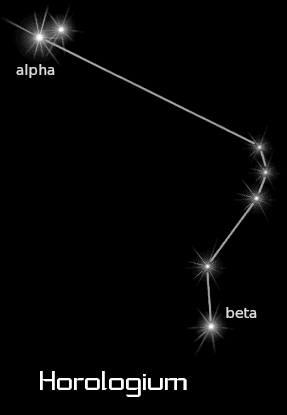
Lambda Horologii is an ageing yellow-white giant star of spectral type F2III that spins around at 140 km/second, and is hence mildly oblate. It is 161 ± 1 light-years from Earth.
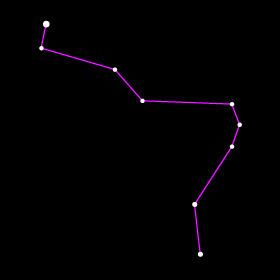
However, Horologium does have several variable stars. R Horologii is a red giant Mira variable with one of the widest ranges in brightness known, around 700 light-years from Earth. It has a minimum magnitude of 14.3 and a maximum magnitude of 4.7; its period is approximately 13 months. TW Horologii is a semiregular variable red giant star that is classified as a carbon star. It is around 1000 light-years distant from Earth.

Iota Horologii is a yellow dwarf star a little larger and brighter than the Sun 56.0 ± 0.2 light-years distant from Earth. It was found to have a Jupiter-like planet orbiting it every 300 days. HD 27631 is a Sun-like star that was found to have a Jupiter-like planet.
Deep-sky objects
Horologium is also home to many deep-sky objects; there are several globular clusters in the constellation. NGC 1261 is a globular cluster of 8th magnitude, located 44,000 light-years from Earth. NGC 1512 is a barred spiral galaxy located about 38 million light-years away from Earth. The globular cluster Arp-Madore 1 is found in the constellation, the most remotely known globular cluster in the Milky Way at a distance of 398,000 light years.
The Horologium Supercluster is a galaxy supercluster that ranges from 700 million to 1.2 billion light-years from Earth.
